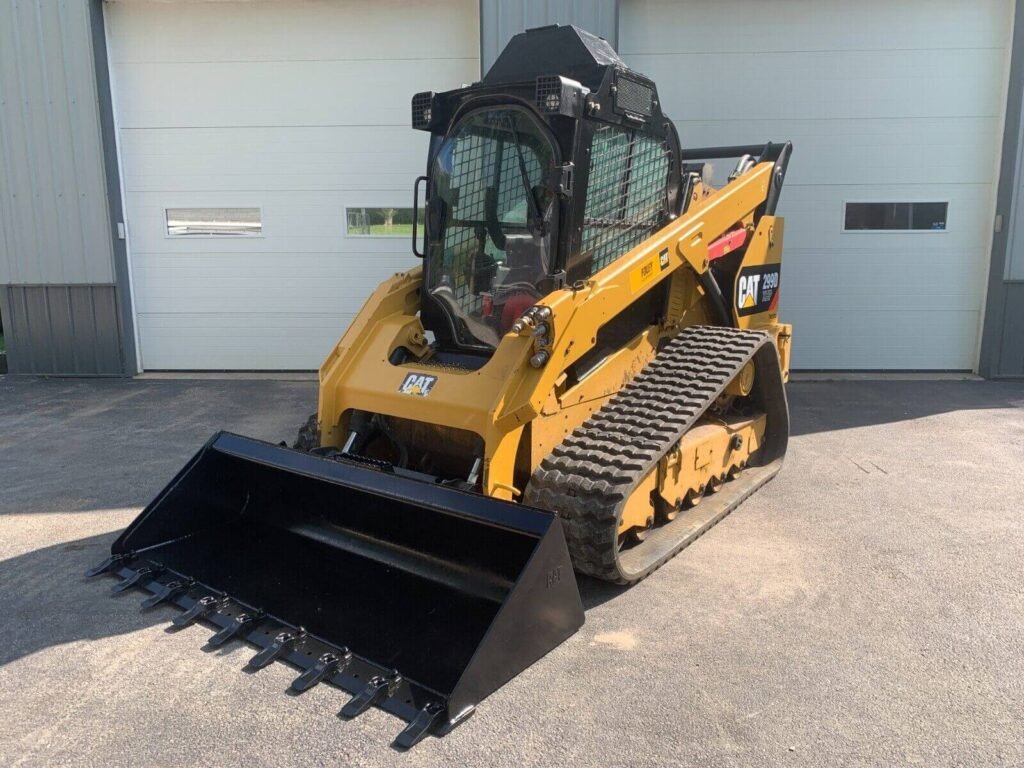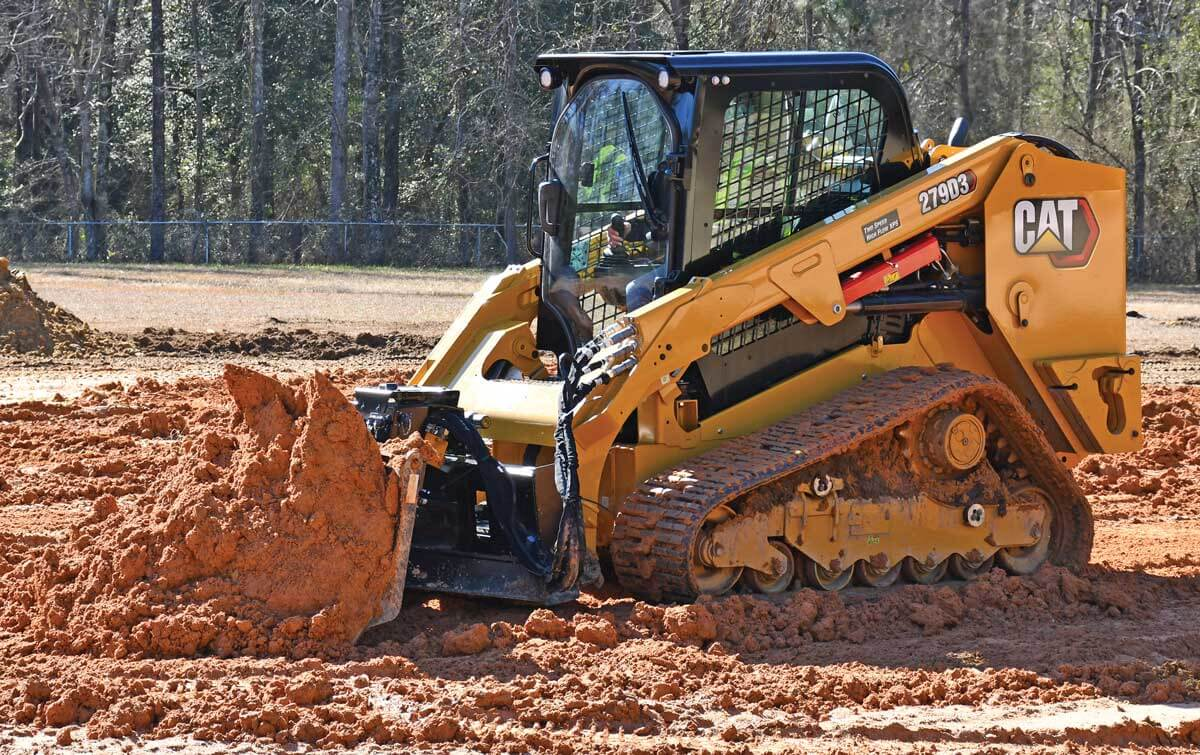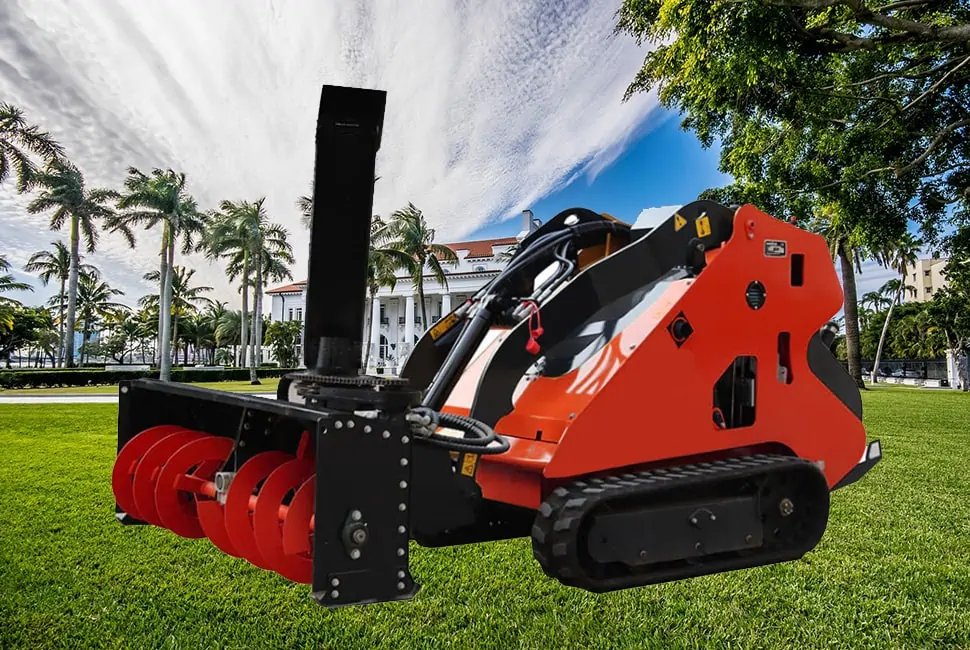Introduction
Are you new to operating a track skid loader or looking to improve your skills? Look no further than the ultimate guide to using a track skid loader! As a powerful and versatile machine, a track skid loader can make your work on construction sites, landscaping projects, and farm work more efficient and effective. However, it’s important to understand the proper techniques and safety precautions to ensure success and avoid accidents.
This guide will cover everything you need to know, from the basics of operating the machine to advanced tips and tricks. We’ll discuss the different types of attachments available, how to maintain your track skid loader, and common mistakes to avoid.
Whether you’re a seasoned pro or just starting, this guide will give you the knowledge and confidence to operate your track skid loader easily and precisely. Let’s get started!
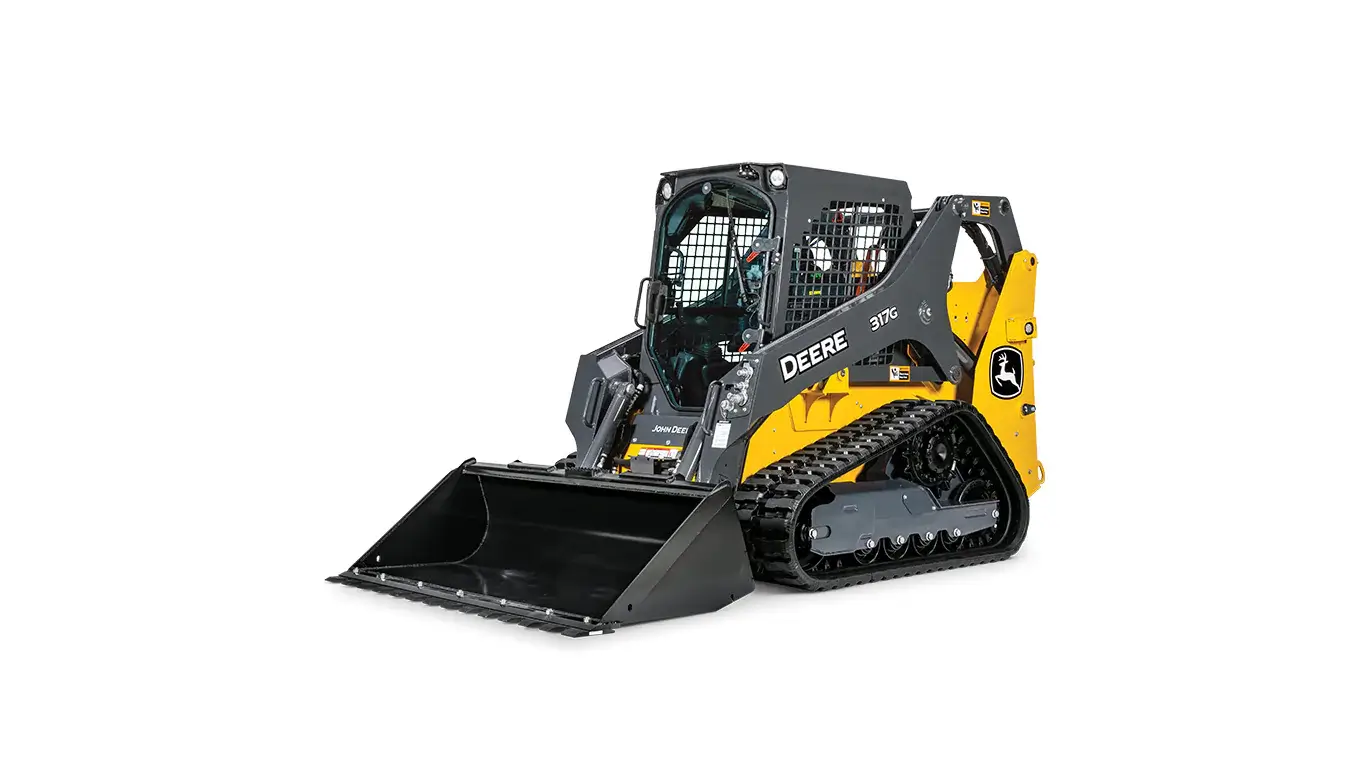
What Are The Benefits of a Track Skid Loader?
A track skid loader is a powerful and versatile machine commonly used in construction, agriculture, landscaping, and other industries. It is a popular choice for professionals and do-it-yourselfers because of its numerous benefits.
One major advantage of a track skid loader is its ability to maneuver in tight spaces. With a compact design and tight turning radius, it can easily access areas that larger machines cannot, making it ideal for working on projects in urban or suburban areas. Additionally, its rubber tracks distribute weight evenly, minimizing ground disturbance and reducing the risk of damage to lawns or other delicate surfaces.
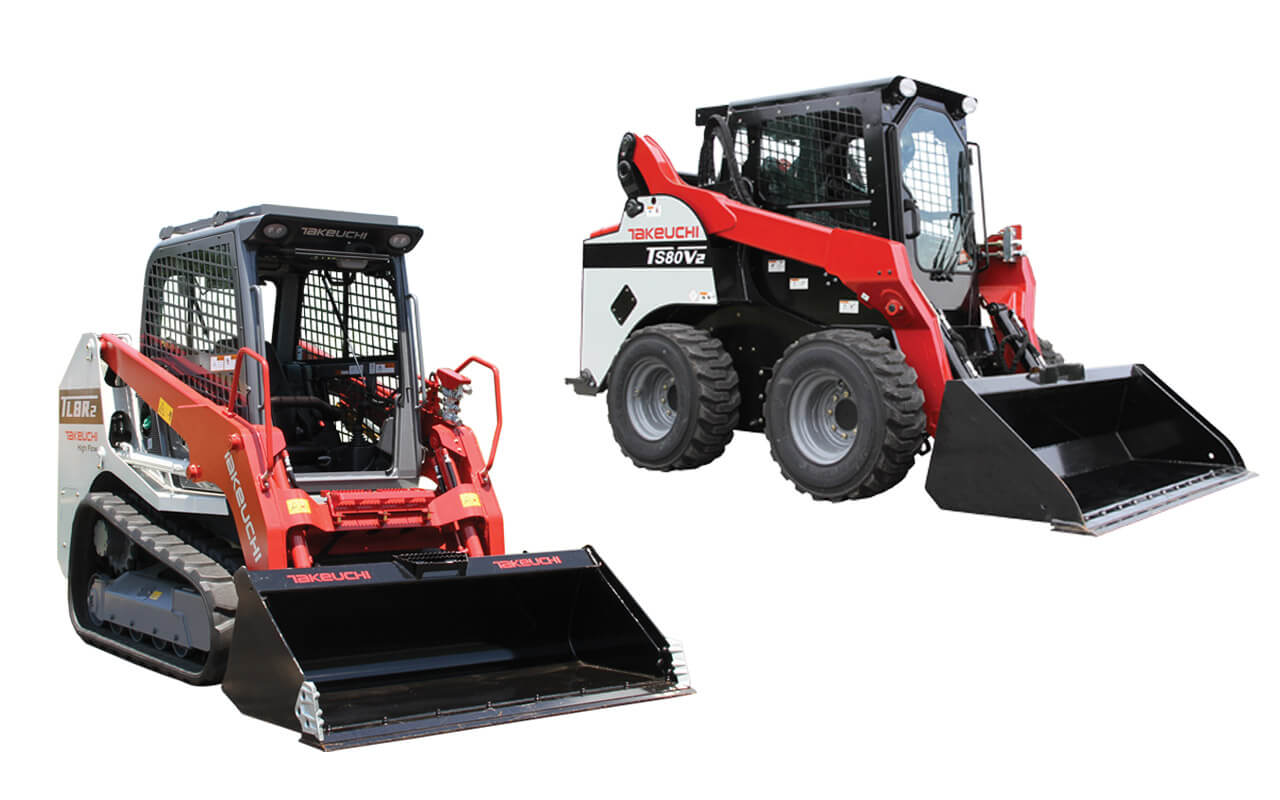
Another benefit of a track skid loader is its versatility. With various attachments available, it can be used for various tasks, from digging and hauling to grading and snow removal. This versatility makes it a valuable investment for those who need a machine that can adapt to different projects.
Track skid loaders are also known for their speed and efficiency. They can work quickly and complete tasks promptly, saving time and money for businesses and individuals.
Finally, track skid loaders are generally easy to operate and maintain, with a user-friendly design and simple maintenance requirements. This makes them accessible to a wide range of users, from experienced professionals to those new to using heavy equipment.
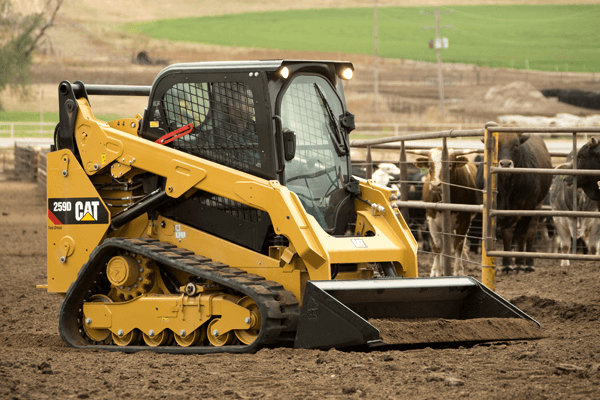
How To Choose the Right Track Skid Steer?
Choosing the right track skid steer can be a daunting task, as numerous models are available on the market. To select the best track skid steer for your needs, you should consider several factors, including your primary use, the operating capacity, the size and weight of the machine, the terrain on which you will be operating, the available attachments, and the maintenance and service requirements.
First, consider your primary use for the machine. This will help you narrow your options to machines specifically designed for your needs. Next, look at the operating capacity of the machine. Ensure that you choose a machine with a capacity that meets your lifting and carrying requirements.
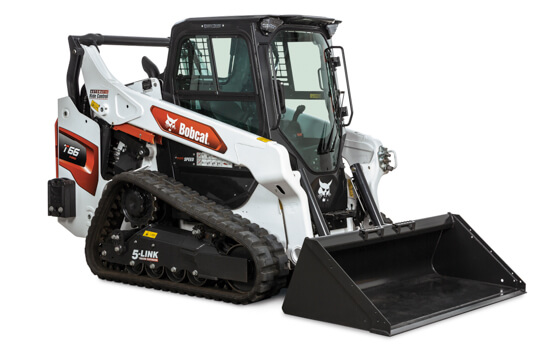
Size and weight are important factors, as they will affect the machine’s maneuverability and storage requirements. Think about the terrain you will be operating the machine, and choose a model with high ground clearance and excellent traction for rough or uneven terrain.
Also, consider the attachments available for the machine, as these can greatly enhance its functionality. Finally, think about the maintenance and service requirements of the machine. Choose a model that is easy to maintain and service and has accessible maintenance points to ensure that it can be serviced quickly and efficiently.

How to Operate a Track Skid Steer?
It can be intimidating if you’re new to operating a track skid steer. However, with a little practice and guidance, you’ll quickly become comfortable and proficient in its use. Here’s a step-by-step guide to operating a track skid steer:
- Familiarize yourself with the controls: Before operating the machine, take some time to familiarize yourself with the controls. Locate the throttle, pedals, joystick, and any other levers or switches that will be used to control the machine.
- Check the surroundings: Before starting the engine, take a moment to survey the surroundings. Ensure that the area is clear of obstacles and people.
- Start the engine: Once you’ve checked your surroundings, start the engine using the ignition switch.
- Raise the bucket: To begin using the machine, use the joystick to raise the bucket off the ground. Move the bucket slowly and smoothly to avoid jarring the machine.
- Move the machine: Use the pedals to move the machine forward and backward. The left pedal controls the left track, while the right pedal controls the right. To turn, press down on one pedal while releasing the other.
- Use the attachments: Depending on your task, you may need attachments such as a bucket, fork, or auger. Attach the appropriate tool and use the joystick to control its movement.
- Shut off the engine: When you’ve finished using the machine, shut off the engine using the ignition switch.
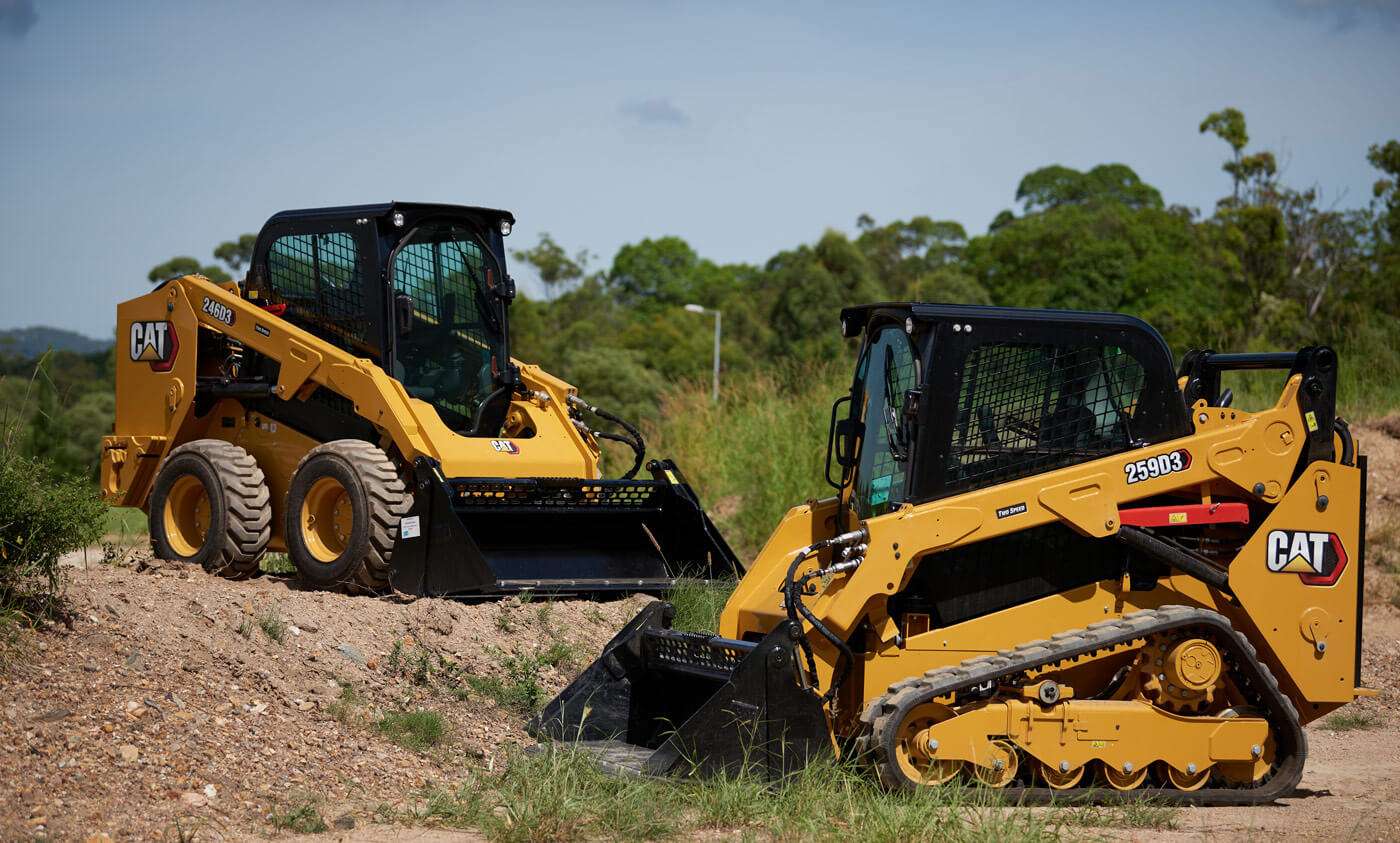
What Are Some Tips for Safe Operation Of Track Skid Loader?
When it comes to operating a track skid loader, safety should always be your top priority. Whether you’re a seasoned professional or a first-time operator, it’s crucial to follow these essential tips to keep yourself and others safe:
Wear the Right Safety Gear
Always wear appropriate safety gear, such as a hard hat, safety glasses, and steel-toed boots when operating the machine.
Inspect the Machine
Before starting, inspect it for any damage or defects. Check the tires, tracks, hydraulic lines, and other critical components.
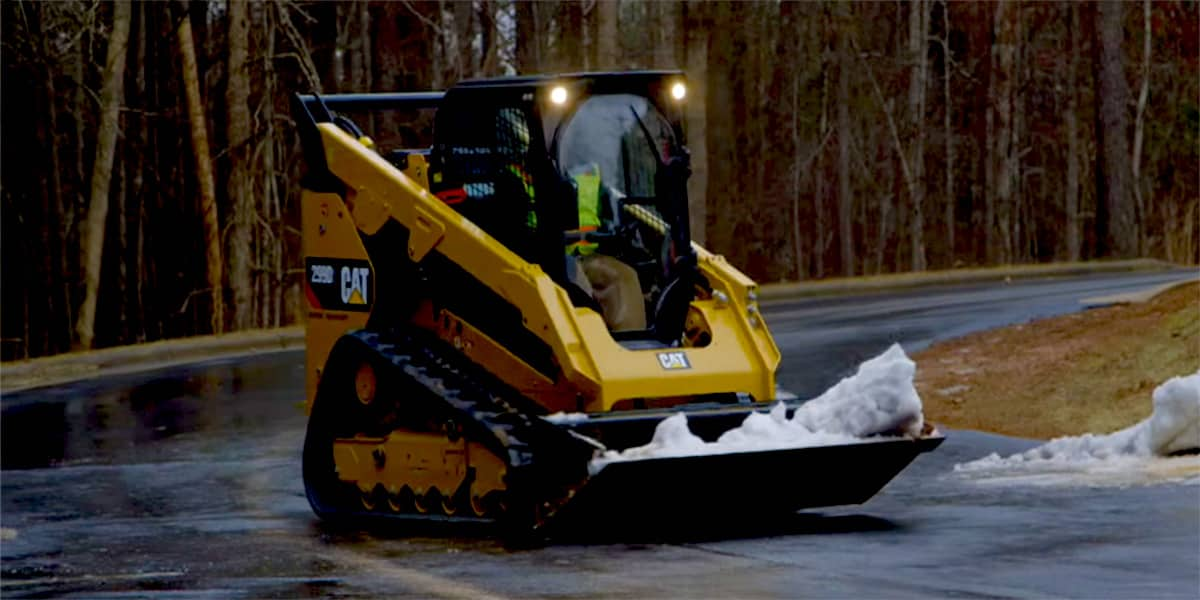
Use Caution on Slopes
When operating the machine on slopes, reduce your speed and use caution to avoid tipping over.
Keep Bystanders Clear
Make sure that no one is near the machine while it’s in use. Keep bystanders clear of the work area and use caution when backing up or turning.
Avoid Overloading
Never exceed the machine’s weight capacity to avoid putting yourself or others at risk.
Maintain Visibility
Ensure that you have good visibility while operating the machine. Use lights or reflective tape if necessary.
Secure the Machine
When it is not in use, ensure it is secure and never leave it unattended.
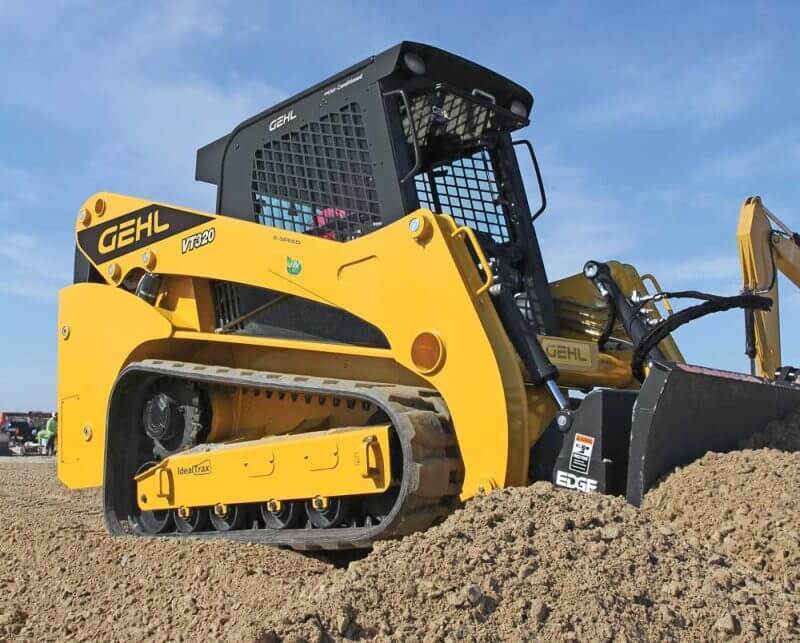
How To Perform Maintenance & Care For Track Skid Loader?
Taking care of your track skid loader is crucial for ensuring its longevity and performance. Regular maintenance and care will help to prevent breakdowns, reduce repair costs, and extend the machine’s lifespan. Here are some tips for maintaining and caring for your track skid loader:
Check fluids regularly
Check the oil, hydraulic fluid, and coolant levels and top up if necessary.
Inspect the tracks or tires.
Check them for wear and damage, and replace them if necessary.
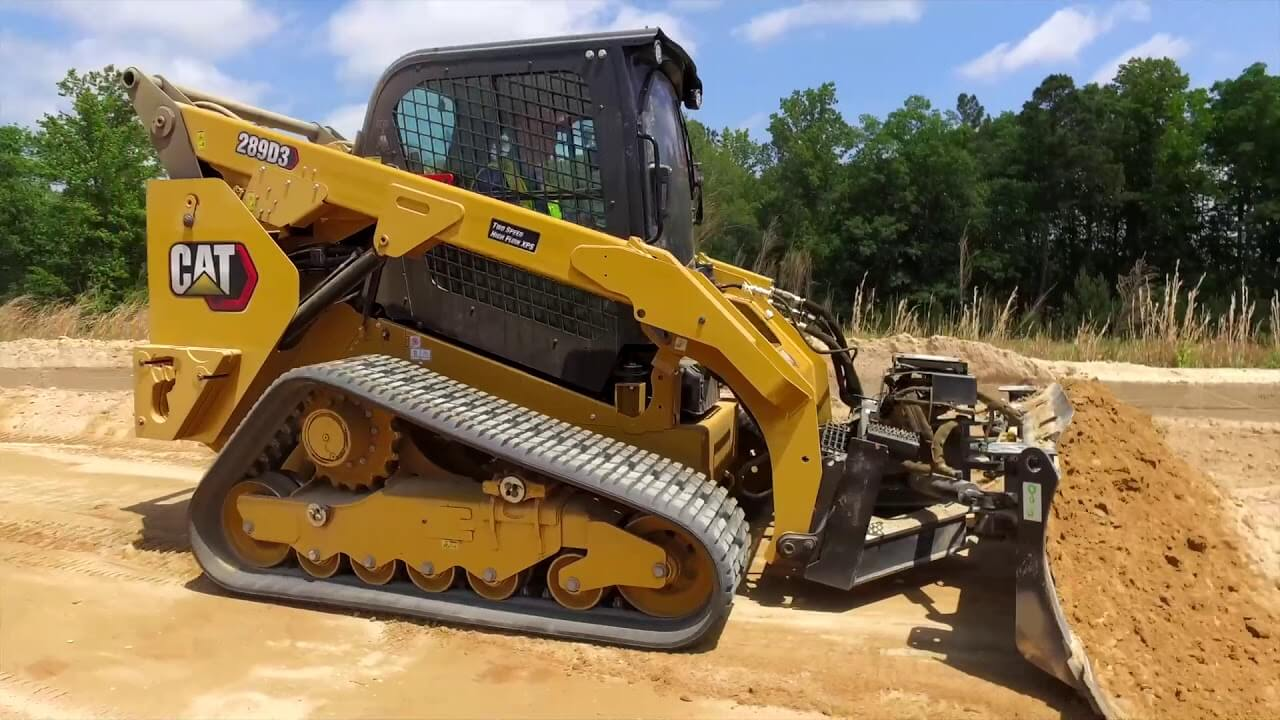
Lubricate the machine
Regularly lubricate all moving parts to reduce friction and prevent damage.
Clean the machine
Keep the machine clean and debris-free to prevent damage and improve performance.
Store the machine properly.
Store the machine in a dry area to prevent rust and other damage.
Follow the manufacturer’s recommendations.
Follow the recommended maintenance schedule provided by the manufacturer to keep the machine in good working condition.
Address issues promptly
If you notice any issues with the machine, address them promptly before they become larger problems.
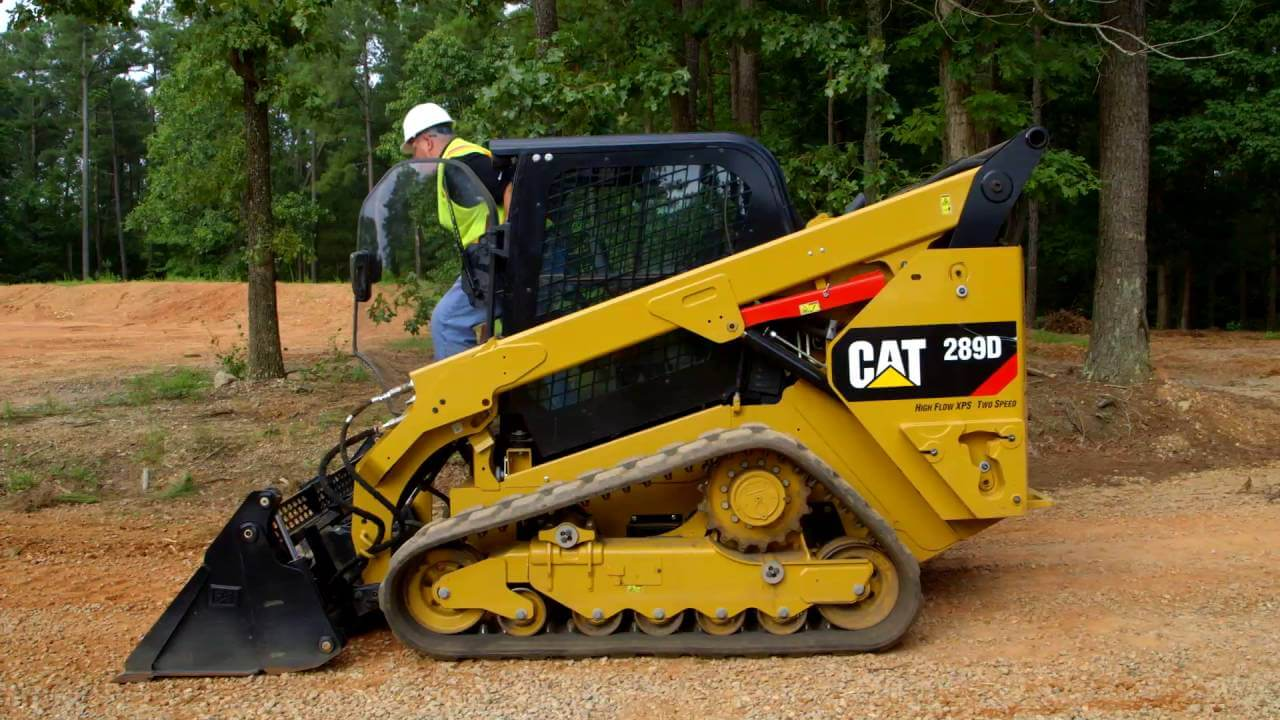
Troubleshooting Common Issues In A Tracked Skid Steer Loader?
Even with regular maintenance, sometimes issues may arise with your tracked skid steer loader. Understanding common issues and how to troubleshoot them can help you get your machine up and running quickly. Here are some common issues and troubleshooting tips:
Engine won’t start
Check the battery, connections, fuel system, and spark plugs. If the battery is low or the connections are loose, charge the battery or tighten the connections. If the fuel system or spark plugs are faulty, repair or replace them.
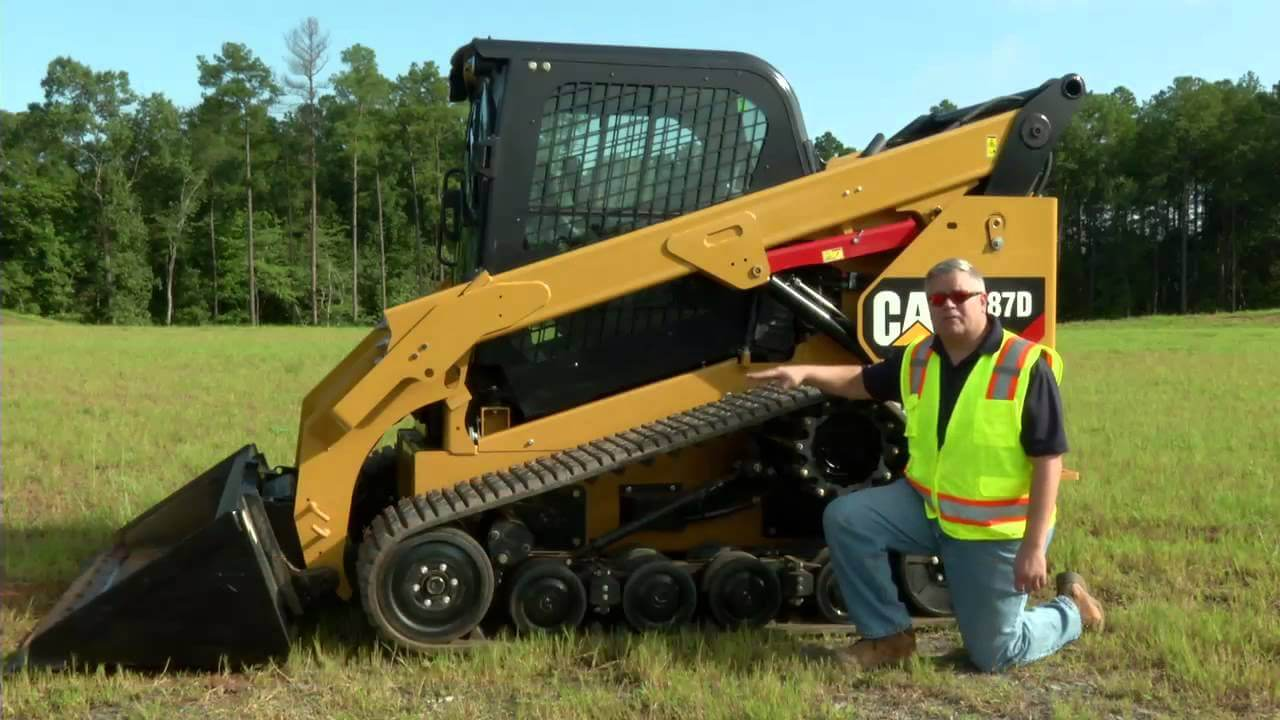
Hydraulic system is not functioning.
Check the hydraulic fluid level and look for leaks. If the fluid level is low, top it up, and repair it if there’s a leak.
Track or tire issues
If the tracks or tires are worn, damaged, or loose, they may need to be replaced or tightened.
Overheating
Check the coolant level and look for leaks in the cooling system. If the coolant level is low or there’s a leak, repair it.
Electrical issues
Check the fuses and connections in the electrical system. If a fuse is blown or a connection is loose, replace the fuse or tighten the connection.
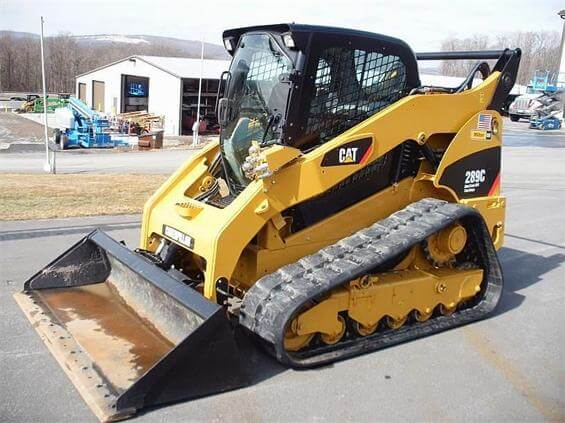
Applications Of A Track Skid Loader
A track skid loader, also known as a compact track loader, is a versatile machine that can be used for many applications. Some of the most common applications of a track skid loader include:
- Construction: A track skid loader is commonly used in the construction industry for grading, excavation, and demolition tasks. Its compact size and maneuverability make it ideal for working in tight spaces and on rough terrain.
- Landscaping: A track skid loader is also used in landscaping for grading, digging, and moving soil and mulch. Its ability to navigate rough and uneven terrain makes it popular for landscaping projects.
- Agriculture: A track skid loader is commonly used for hauling, grading, and excavating tasks. Its ability to handle a range of attachments, such as buckets, forks, and grapples, makes it a highly adaptable machine for various agricultural tasks.
- Snow removal: A track skid loader is commonly used in snow removal applications, such as clearing driveways, sidewalks, and parking lots. Its ability to navigate over snow and ice makes it an effective machine for clearing snow in challenging conditions.
- Material handling: A track skid loader is commonly used for tasks such as loading and unloading trucks, moving materials around a job site, and stacking materials. Its ability to handle a range of attachments makes it a highly versatile machine for material handling applications.
Conclusion
In conclusion, a track skid steer is a versatile and powerful machine that can be incredibly useful for various tasks. Whether you’re a seasoned operator or just starting, choosing the right machine, operating it safely, and performing regular maintenance and care is essential.
With the tips and guidelines outlined in this ultimate guide, you can confidently operate a track skid steer and tackle any job easily. Remember to prioritize safety at all times, follow the manufacturer’s recommendations, and address any issues promptly. Doing so can ensure that your machine operates at its best and lasts for years.

